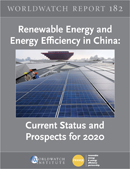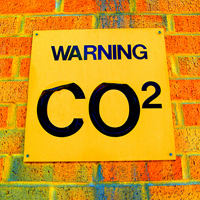WASHINGTON, Oct 4, 2011 (IPS) – As a light drizzle fell Saturday, U.S. Energy Secretary Steven Chu pointed to solar houses constructed by students on the National Mall park in Washington as evidence that the U.S can compete internationally in the renewable energy market to create jobs and win “the war against climate change”.
(…)
Alexander Ochs, director of the energy and climate programme at the WorldWatch Institute, said the solar industry was actually one of the fastest-growing industries in the U.S., with 5,000 companies employing more than 100,000 people. He said Solyndra failed because it made poor investment decisions and was buffeted by price fluctuations in the raw materials market – not because solar power industry is in trouble. “Solyndra is now used as a scandal to set an example that solar is not working in the U.S. or that it cannot compete on the international market. It is basically used as an attempt to kill the industry as a whole,” Ochs told IPS.
In fact, Ochs said the solar industry grew at a rate of 69 percent in the last year alone, more than doubling in size, and at a rate much higher than the fossil fuel industry, which grows only in the low single digits, or nuclear, the only energy sector with a negative growth rate. Notwithstanding those facts, Ochs said criticisms of government support for renewable energy did not take into account the comparatively large cost of fossil fuel subsidies.





 this year, top Chinese officials
this year, top Chinese officials 

 Half a year before the U.N. climate conference in Copenhagen, negotiators are far from agreeing on key components of a global climate deal. As envisioned in the 2007 Bali Climate Action Plan (or “Bali Roadmap”), the summit in December is supposed to deliver a follow-up agreement to the Kyoto Protocol under the United Nations Framework Convention on Climate Change (UNFCCC), which expires at the end of 2012.
Half a year before the U.N. climate conference in Copenhagen, negotiators are far from agreeing on key components of a global climate deal. As envisioned in the 2007 Bali Climate Action Plan (or “Bali Roadmap”), the summit in December is supposed to deliver a follow-up agreement to the Kyoto Protocol under the United Nations Framework Convention on Climate Change (UNFCCC), which expires at the end of 2012.